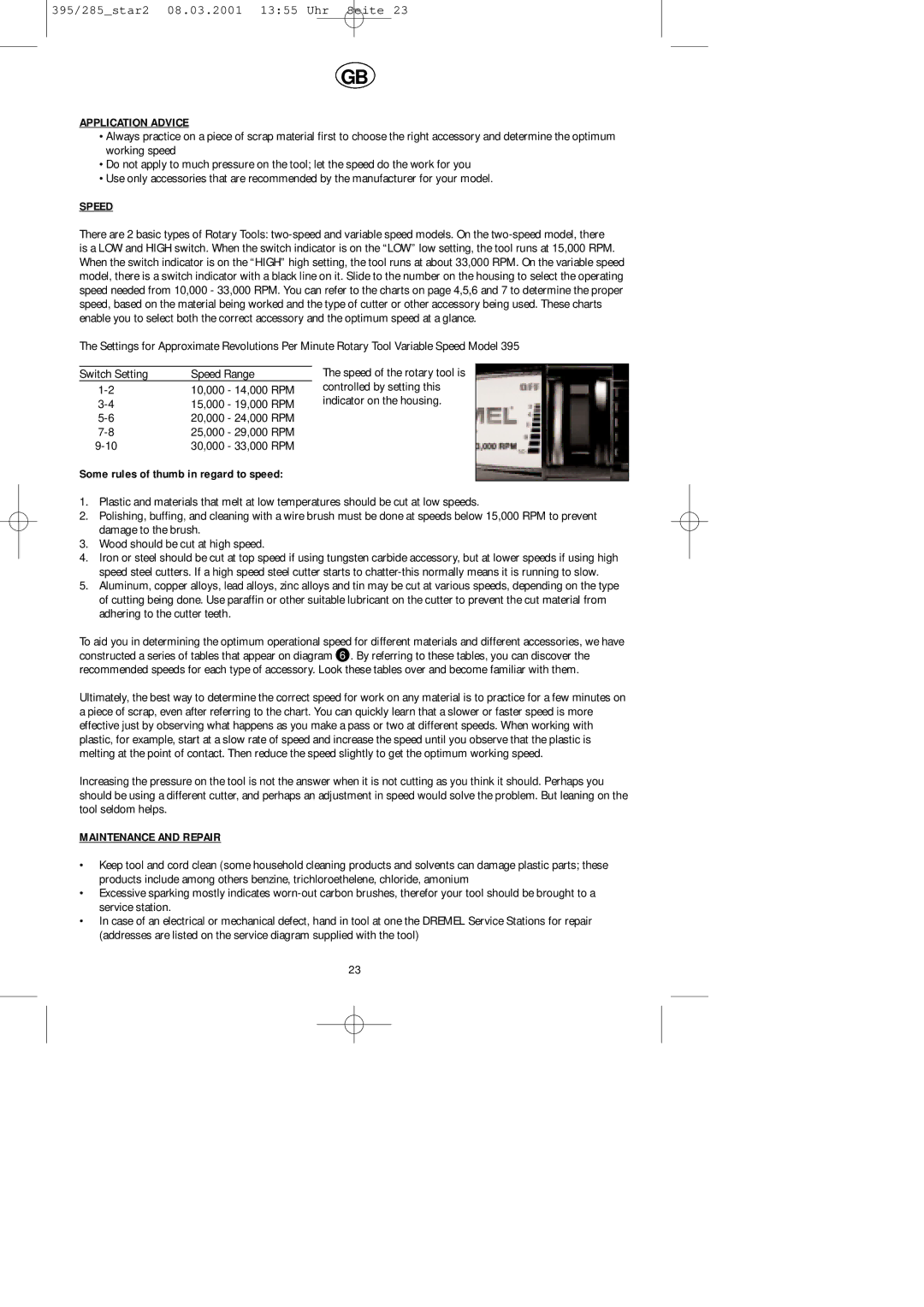285, F013028566, 395, F013039567, F013028586 specifications
The Dremel 275, 395, and 285 are versatile rotary tool models that cater to a wide range of crafting and DIY projects. Renowned for their precision, durability, and user-friendly design, these tools have been a favorite among hobbyists, woodworkers, and professionals alike.The Dremel 275 boasts a powerful 120V motor capable of delivering high speeds up to 35,000 RPM. This model is particularly suited for light-duty tasks, making it ideal for intricate detail work such as engraving, sanding, and polishing. One of its main features is the easy-to-use speed control, which allows users to adjust the RPM according to the specific needs of the task, ensuring a high degree of precision and control.
The Dremel 395, on the other hand, is designed for more demanding applications with its robust 120V motor that can handle heavier workloads. It is equipped with a ball bearing construction that enhances stability and reduces vibration during operation. The 395's performance is further complemented by its ergonomic design, which provides a comfortable grip for extended periods of use. Additionally, an innovative cooling system prevents overheating, prolonging the tool's lifespan and efficiency.
The Dremel 285 stands out for its high-performance variable speed feature, allowing users to fine-tune the speed from 5,000 to 30,000 RPM. This versatility makes it suitable for a myriad of tasks from cutting hard materials to polishing delicate surfaces. Its innovative EZ Twist Nose Cap eliminates the need for a wrench when changing accessories, greatly simplifying the process and making it more convenient for users.
All three models utilize Dremel's extensive range of accessories, allowing for unparalleled versatility in applications. Whether you're looking to carve, cut, grind, or polish, these rotary tools are compatible with numerous attachments designed for specific tasks.
In summary, the Dremel 275, 395, and 285 rotary tools combine powerful motors with user-friendly features, making them ideal for both beginners and seasoned craftsmen. With their commitment to quality and innovation, Dremel continues to lead the market in rotary tool technology.

